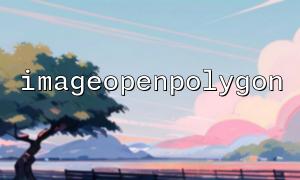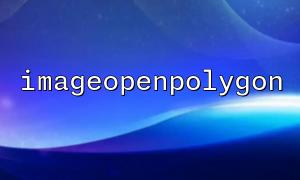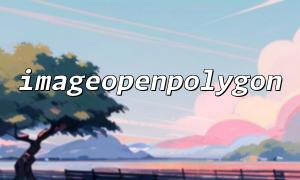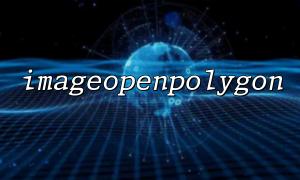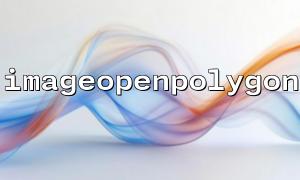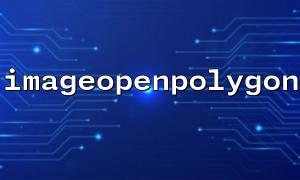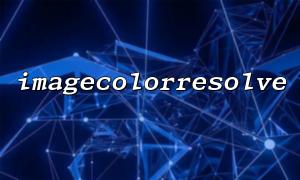In PHP, the imageopenpolygon() function is a very powerful graphical function that allows us to draw enclosed polygonal figures by specifying a set of coordinates. Polygons can be used in various application scenarios, such as graphics editing, image processing, etc. This article will introduce how to use the imageopenpolygon() function to create enclosed polygons and share some practical tips to make it easier for you to use this function.
imageopenpolygon() is one of the functions provided by PHP's GD library to draw polygons in images. This function takes as parameters an image resource and an array containing vertex coordinates. The polygon is formed by joining specified coordinate points, finally forming a closed shape.
bool imageopenpolygon(resource $image, array $points, int $num_points);
$image : Image resource, usually an image generated by imagecreatetruecolor() or other image creation function.
$points : an array containing the vertex coordinates of a polygon, each containing two elements - x and y.
$num_points : The number of vertices of a polygon, usually the number of elements in the $points array.
The return value of this function is true or false , indicating whether the function is successfully executed.
Create image resources <br> We first need to create an image resource, which can use imagecreatetruecolor() to create a blank image.
Define the coordinates of polygons <br> Define the coordinates of each vertex of a polygon through a two-dimensional array.
Draw polygons <br> Use the imageopenpolygon() function to draw enclosed polygons based on defined coordinates.
Output image <br> Finally, we can set the MIME type of the image through header() and output the image using imagepng() or imagejpeg() .
Here is a simple example code showing how to use the imageopenpolygon() function to draw a closed polygon.
<?php
// Create a blank image,Width is 400,Height is 400
$image = imagecreatetruecolor(400, 400);
// Set background color to white
$backgroundColor = imagecolorallocate($image, 255, 255, 255);
imagefill($image, 0, 0, $backgroundColor);
// Set the color of the polygon to red
$polygonColor = imagecolorallocate($image, 255, 0, 0);
// Define the vertex coordinates of a polygon
$points = [
100, 100, // vertex1 (x1, y1)
300, 100, // vertex2 (x2, y2)
350, 300, // vertex3 (x3, y3)
50, 300 // vertex4 (x4, y4)
];
// use imageopenpolygon() Draw closed polygons
imageopenpolygon($image, $points, count($points) / 2);
// set up HTTP The head is PNG picture
header("Content-Type: image/png");
// Output image
imagepng($image);
// Destroy image resources,Free memory
imagedestroy($image);
?>
Use imagecreatetruecolor() to create a blank image with a width of 400px and a height of 400px.
Two colors are assigned using imagecolorallocate() : white as the background color and red as the fill color of the polygon.
An array of four vertices is defined, each represented by x and y coordinates.
A closed red polygon is drawn using the imageopenpolygon() function.
The output image type is PNG format using header() , and finally the output image is via imagepng() .
Dynamically calculate polygon vertex coordinates <br> You can dynamically calculate the vertex coordinates of a polygon according to your needs. For example, if you need to draw a regular hexagon, you can calculate the positions of each vertex using simple mathematical formulas.
Adjust the fill color of the polygon <br> In imagecolorallocate() , you can select any color for the polygon. By adjusting the RGB value, you can achieve different color effects.
Use gradient colors <br> If you want the polygon to look more layered, you can use a gradient fill. Although imageopenpolygon() itself does not support gradient fill, you can do it by combining imagefill() or other related functions.
Using a transparent background <br> In some cases, you may need to generate an image with a transparent background. You can set transparent colors through imagecolortransparent() and output PNG images through imagepng() to achieve transparent effects.
The imageopenpolygon() function is a very useful graphical function in PHP that can help you easily draw closed polygons. By mastering the use of functions and combining them with actual needs, you can achieve various effects in image processing projects. Hopefully the sample code and tips in this article can help you use this function better. If you have more needs for graphics processing, you can learn PHP's GD library in depth, which provides you with rich image manipulation functions.
